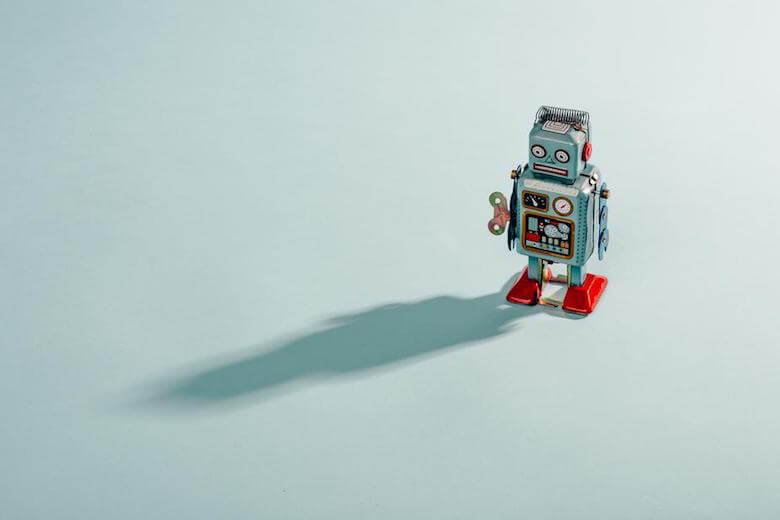
Early childhood is a wonderful time of life, because everything is new to the learner. That means you can teach subjects that most adults may overlook as nothing special, but are actually quite scientifically interesting! In this article we’ll discuss ideas for teaching preschoolers about shadows. This makes for a great and easy early childhood science lesson.
Introducing preschoolers to the concept of light and shadows
With preschoolers and toddlers, you don’t have to get too detailed about the science of shadows, of course. Shadows are all around us, so you can point to any solid object that is creating a shadow, to help them notice what is going on.
The most interesting shadows, however, are the ones we can make ourselves, with our bodies! And, the ones we can manipulate. Shadows get interesting when they change their characteristics. That brings us to our next points!
Showing preschoolers hard and soft shadows with different sources of light
Light comes in different forms, and the harsher light is, the more distinct shadow lines will be. But, if light is diffused, or more spread out, shadows become ‘feathered’ around their edges. This creates hard and soft shadows.
You can show preschoolers how different types of light create these different shadows. This happens indoors with artificial lights, and also outdoors, depending on how many clouds are in the sky, or if objects are obscuring the sun. You can see from this early childhood educator’s story that on a cloudy day she let her class observe the phenomenon of no shadows outside. She waited until they noticed, and then they pondered why. The absence of shadows helped her preschoolers learn more about how shadows work! The shadows were diffused so much by the clouds that you could barely see them!
This is similar to how lamp shades work – it doesn’t make the light go away, but it ‘spreads’ the light so it travels in many directions, creating fewer shadows. If you don’t want to take lamp shades on and off, you can also demonstrate this by placing a piece of white paper in front of a flashlight beam pointing to a wall. Then remove and replace the paper so kids see the difference in how the light and shadows behave.
Another interesting way you can turn hard shadows into soft shadows is with a diffuser panel – the kind used in photography. This causes light to bounce off of a panel, instead of travelling through a diffusion object (like a lampshade). So the technique shows kids a different way to make soft shadows.
Diffusion panels are relatively cheap to buy, or perhaps even to rent. In fact, some photographers simply use a white foam core poster board to achieve this effect. The idea is that you allow a strong light to bounce off the white panel, which then softens shadows on a person’s face. Here is a resource that teaches how diffuser panels work in photography. This isn’t necessarily a kid-friendly explanation, but it may help you, as the teacher, learn about the topic, and then introduce it to the kids later. The differences here will be subtle, but it may help preschool-age kids learn to notice small details about how shadows behave.
Get kids to playing with shadow manipulation: moving shadows, shrinking shadows, enlarging shadows and double shadows
As we all know, kids learn best through play. Shadows make great play things! That’s because you can creatively manipulate them, once you know how they work. Plus, they’re almost always available. And when they’re not, they create teachable moments.
Depending on the distance and angle of a light source to an object, shadows will change their shape. This can be fun for kids because shadow shapes can get kind of funny – especially when they make our body parts look exaggerated or warped.
Here is a preschool lesson to teach how body shadows can move, seemingly on their own. You can stand in the same spot at different times of day, and your shadow will change. And, if you move, your shadow always follows you. What’s happening? This is when you can teach about angles of light, the sun’s position, and objects blocking light. This can then turn into a game of shadow tag, or other activities found in this document.
And, did you know you can have two shadows? All you need is two light sources!
Make preschool art with shadow tracing
A classic way to teach shadows in early childhood education is with shadow tracing. All those exaggerated shapes we talked about earlier can make for some fun drawing, if you can capture them in place.
Shadow tracing is very simple: you simply create a shadow with a light source and an object in front of it. Place your paper down and start tracing with art materials – pencils, crayons, etc.
You can also trace shadows with sidewalk chalk when you’re outside exploring body shadows.
We found some photos on Pinterest to demonstrate shadow tracing ideas with toys and smaller objects:
https://www.pinterest.ca/pin/AeZTXnnsDiPkKbDVUo3bVD0cnAU2wYzXrSdXlGvOLrLVPzks_UhsCm4/
and
https://www.pinterest.ca/pin/503699539558089145/
Tell stories with shadow puppets in the preschool classroom
Another classic way to teach preschoolers about shadows is with a shadow theatre! You can make shadow puppets and use their silhouettes during story time. You can even make a stationary shadow theatre set with blocks and toys, as shown in this blog post. And, here is a simple tutorial on how to make shadow 2D shadow puppets of animal shapes.
Another fun one is hand shadows. Here is a web page showing how to make some common hand shadow puppets. This can also make a great exercise for developing fine motor skills!
Teaching preschoolers about shadows can go on and on…
As you can see learning about shadows can introduce many lessons, concepts and activities for children in the early years. You can bring in night lights with shapes to show inverted shadows, bring in translucent materials to make coloured shadows, and watch shadow dances online. You can also use the science of shadows for interdisciplinary learning, as the activities involved can cross over into other subjects (for example, if you make animal silhouette puppets, you can teach about animals at the same time). You can also make a shadow sensory station in the classroom using cheap flashlights and a white poster board. Kids can experiment with shadows all the time during unstructured play.
In short, you can take shadow learning as far you like. They’re actually quite a fun science activity too!
See related on our blog:
- 17 Preschool interdisciplinary apple lessons and activities
- 5 Fun, purpose-driven walks to go on with daycare kids or preschoolers
- 10 Activities and crafts to teach preschoolers about the ocean
- 12 Space-themed crafts & activities for preschool or daycare classrooms
- Teaching useful calendar concepts in preschool and daycare
